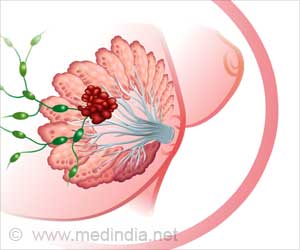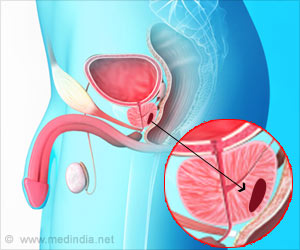
Revolutionizing Cancer Treatment Through Programmable Bacteria
Go to source). Researchers at Penn State have a new strategy: turning the tables on cancer. They built a genetic circuit that acts like a Trojan horse. It sneaks into cancer cells and reprograms them to self-destruct, taking out nearby drug-resistant cancer cells too.
‘A new gene drive can reprogram cancer cells to self-destruct, effectively fighting drug resistance. #cancerresearch #genetherapy’
Tweet it Now
This is still early research, tested in cells and mice, but it showed promise in overcoming a variety of resistances. The team is so confident they even filed a patent for this potential new weapon against cancer. Leveraging Tumor Evolution: A New Paradigm for Anticancer Therapy
“This idea was born out of frustration. We’re not doing a bad job of developing new therapeutics to treat cancer but how can we think about potential cures for more late-stage cancers?” said Justin Pritchard, Dorothy Foehr Huck and J. Lloyd Huck Early Career Entrepreneurial Associate Professor of Biomedical Engineering and senior author on the paper. “Selection gene drives are a powerful new paradigm for evolution-guided anticancer therapy. I love the idea that we can use a tumor’s inevitability of evolution against it.”Newer personalized cancer medicines often fail, not because the therapeutics aren’t good but because of cancer’s inherent diversity and heterogeneity, Pritchard said. Even if a frontline therapy is effective, resistance eventually develops and the medication stops working, allowing the cancer to return. Clinicians then find themselves back at square one, repeating the process with a new drug until resistance emerges again. The cycle escalates with each new treatment until no further options are available.
“You’re playing a game of Whac-A-Mole. You don’t know which mole is going to pop up next, so you don’t know what is going to be the best drug to treat the tumor. We’re always on our back foot, unprepared,” said Scott Leighow, a postdoctoral scholar in biomedical engineering and lead author of the study.
Engineering Tumor Vulnerability with Gene Drives
The researchers wondered if, instead, they could get one step ahead. Could they potentially eliminate resistance mechanisms before the cancer cells have a chance to evolve and pop up unexpectedly? Could they force a specific “mole” to pop out on the board, one that they prefer and are prepared to fight?Advertisement
The circuit has two genes, or switches. Switch one acts like a selection gene, allowing the researchers to turn drug resistance on and off, like a light switch. With switch one turned on, the genetically modified cells become temporarily resistant to a specific drug, in this case, to a non-small lung cancer drug. When the tumor is treated with the drug, the native drug-sensitive cancer cells are killed off, leaving behind the cells modified to resist and a small population of native cancer cells that are drug-resistant. The modified cells eventually grow and crowd out the native resistant cells, preventing them from amplifying and evolving new resistance.
Advertisement
“It not only kills the engineered cells, but it also kills the surrounding cells, namely the native resistant population,” Pritchard said. “That’s critical. That’s the population you want to get rid of so that the tumor doesn’t grow back.”
The team first simulated the tumor cell populations and used mathematical models to test the concept. Next, they cloned each switch, packaging them separately into viral vectors and testing their functionality individually in human cancer cell lines. They then coupled the two switches together into a single circuit and tested it again. When the circuit proved to work in vitro, the team repeated the experiments in mice.
However, the team didn’t just want to know that the circuit worked; they wanted to know it could work in every way. They stress tested the system using complex genetic libraries of resistance variants to see if the gene drive could function robustly enough to counter all the genetic ways that resistance could occur in the cancer cell populations.
And it worked: Just a handful of engineered cells can take over the cancer cell population and eradicate high levels of genetic heterogeneity. Pritchard said it’s one of the biggest strengths of the paper, conceptually and experimentally.
“The beauty is that we’re able to target the cancer cells without knowing what they are, without waiting for them to grow out or resistance to develop because at that point it’s too late,” Leighow said.
The researchers are currently working on how to translate this genetic circuit so that it can be delivered safely and selectively into growing tumors and eventually metastatic disease.
Reference:
- Revolutionizing Cancer Treatment Through Programmable Bacteria - (https://today.tamu.edu/2023/11/27/revolutionizing-cancer-treatment-through-programmable-bacteria/)
Source-Eurekalert















